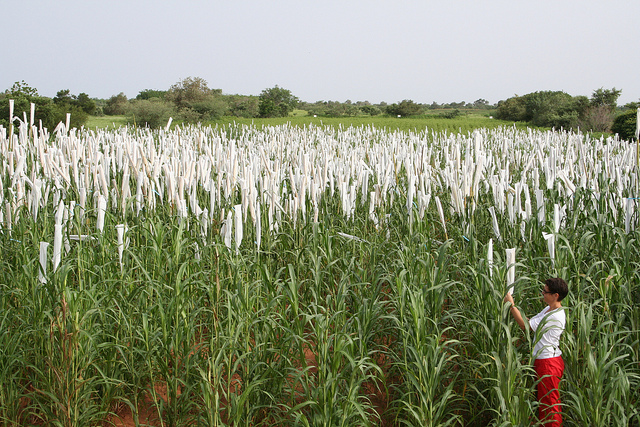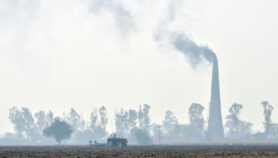13/10/17
Pearl millet genes hold key to climate-proof cereals

By: S. Singh
Send to a friend
The details you provide on this page will not be used to send unsolicited email, and will not be sold to a 3rd party. See privacy policy.
[NEW DELHI] The key to breeding heat- and drought-tolerant rice, maize and wheat may lie in the ‘waxy biosynthesis’ genes of a related cereal, the pearl millet, according to a study by an international team of scientists.
In a study published in September in Nature Biotechnology, the scientists show the potential use of genome sequencing and resequencing information for the hybrid breeding programmes of pearl millet and other cereal staples in South Asia that could be critical in the development of cereal crops adapted to a warmer future.
“We found that the pearl millet genome has an abundance of waxy biosynthesis genes that protect the plant in high temperature and drought conditions”
Rajeev Varshney, International Crops Research Institute for Semi-Arid Tropics
Pearl millet is grown on about 27 million hectares worldwide and nourishes over 90 million people in arid and semi-arid regions of Sub-Saharan Africa and South Asia. It is included in the same family to which major cereal crops of the world such as maize, rice, wheat and barley belong.
Nutrition studies show that pearl millet has the potential to fight iron deficiency, a widespread micronutrient deficiency and a major cause of anaemia, affecting the health and development of a third of the global population.
The team has identified the genes that confer on pearl millet the ability to withstand temperatures of up to 42 degrees Celsius as well as drought conditions. Most cereals cannot tolerate temperatures over 30—35 degrees Celsius, as grain formation begins.
“We found that the pearl millet genome has an abundance of waxy biosynthesis genes that protect the plant in high temperature and drought conditions,” says Rajeev Varshney, research director at the International Crops Research Institute for Semi-Arid Tropics (ICRISAT), India, and coordinator of the Pearl Millet Genome Sequencing Consortium.
“It is possible that pearl millet genes can be used to engineer pathways in other cereals to make them more heat- and drought-tolerant,” says Varshney. “Our studies clearly indicate that pearl millet will perform well in high heat and low water conditions in the context of climate change — this is the crop for the future.”
The research led by ICRISAT, BGI-Shenzhen (China), and the French National Institute for Sustainable Development, involved a team of 65 scientists in 30 institutes using the advanced DNA sequencing to identify valuable traits like drought and heat tolerance, pest resistance and nutrition.
Importantly, the team resequenced and analysed 994 pearl millet lines, enabling insights into population structure, genetic diversity and domestication. The resequencing data was then used to establish marker trait associations for genomic selection and to define heterotic pools.A heterotic pool is a group of related or unrelated genotypes displaying similar combining ability when crossed with genotypes from other genetically distinct germplasm groups. Heterotic groups are important for hybrid breeding.
“This crop is well adapted for warming environments,” says Swapan Datta, a crop scientist currently serving as pro-vice-chancellor, Visva Bharati University, Santiniketan. “Unfolding the genes that encode important traits for nutrition and abiotic stress may be combined with genome editing to design better crop varieties,” says Datta, formerly deputy director-general, Indian Council of Agricultural Research.
This piece was produced by SciDev.Net’s Asia & Pacific desk.













